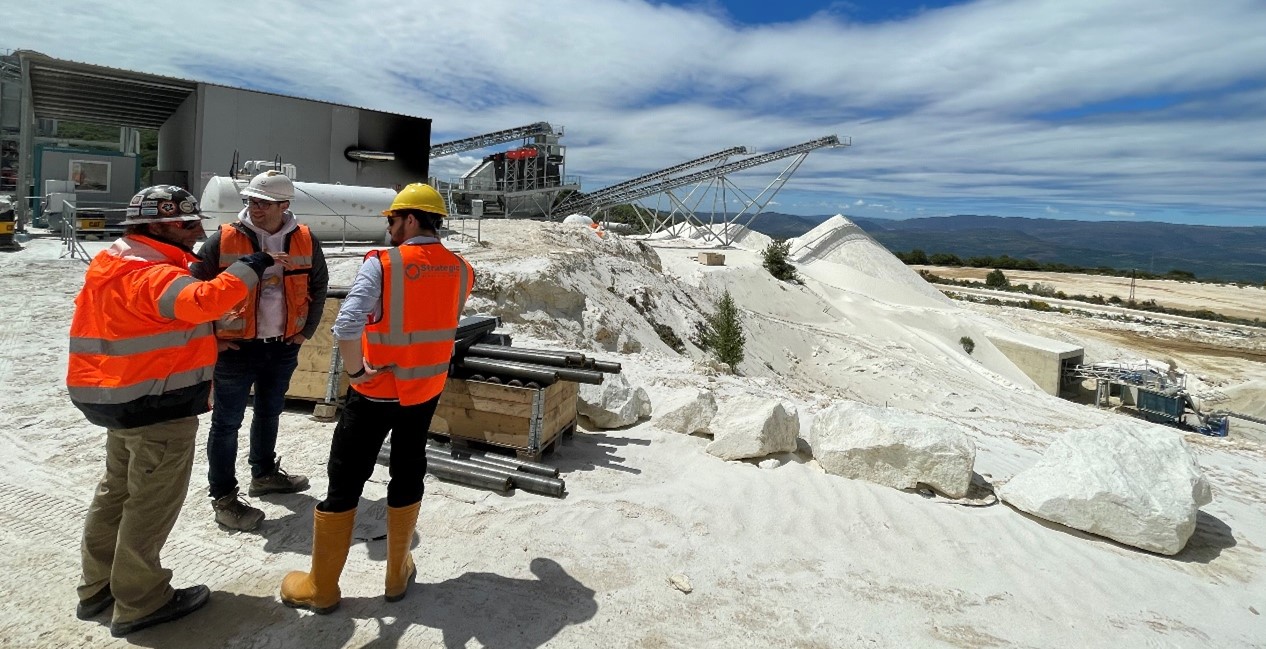ITA recently visited various tin industry stakeholders in Spain in order to gain insight into developments in the country.
Spain represents a microcosm of the tin industry, with all parts of the value chain represented – from tin mining up to tin use. Recycling is a particularly important part of the Spanish tin industry, with the BIR conference being hosted in Barcelona the same week and well attended by the tin industry.
ITA first visited the Oropesa project in southern Spain. Owned by Australian firm Elementos, the mine has been in development for a number of years, beginning life as a small project owned by Eurotin. A small team from the company’s Spanish subsidiary, Minas de Estaños de España (MESPA), showed ITA staff drill core from the project, as well as the future site of the mine pit. ESG considerations were high on the agenda of Elementos’ mine plan; the company plans to recycle water used in the mine through the processing plant and is also planning to replant any trees disturbed by the future pit. Elementos aims to begin mining at Oropesa in 2024.
In Madrid, ITA met with Atlantic Copper, a subsidiary of major copper Freeport-McMoRan. The company is currently constructing the CirCular project, an extension of its Huelva copper recycling plant. CirCular will process some 60,000 tonnes of e-waste annually, recovering a variety of critical metals, including tin. However, one of the major challenges for recyclers is the variability in tin grades – particularly in waste electronics. ITA discussed potential methods for reducing grade variability and dealing with this issue with Atlantic Copper.
With solder the largest tin use, and electronics is the major end use of solder; recovery of tin from e-waste is therefore vital for a circular tin industry. Production from Atlantic Copper’s CirCular project is currently slated to begin in 2024. Based on the average tin grade of PCBs of some 1.9% Sn, ITA estimates that output from the Huelva plant could reach nearly 1,000 tonnes annually.
As the only currently operating primary source of tin in Europe, Mina de Penouta was an important visit for ITA. Owned by Strategic Minerals Europe, Penouta is also the only current European supplier of tantalum and niobium. Over the past few years, Strategic Minerals have mined tailings from past mining projects, but broke ground on the open pit in March 2022.
The open pit will be developed in two phases: initial mining will take place in the upper portions while the lower areas are dewatered. Tailings from the dewatered pit will then be blended with primary ore, before the pit is expanded deeper. Production at Penouta is set to increase to around 60 tonnes tin-in-concentrate per month with the initiation of open pit mining and improvements to the processing plant made in January.
ITA were pleased to meet ITA member Aurubis at its Berango plant. Berango is one of Aurubis’ smaller sites but is a key part of the recycling chain. ITA was treated to a tour of the plant to see how Berango treats a variety of scrap materials. Although primarily producing black copper, Aurubis Berango also converts tin-containing scraps into a tin-lead alloy. This alloy is then transported to Aurubis Beerse for further processing.
ITA and Aurubis discussed challenges in the tin market, particularly in the scrap sector. Availability of scrap material has been declining across Europe in recent years; as tin prices have risen, downstream tin users have looked to reduce processing losses. However, the sector is likely to return to steady growth as electronics proliferate.
ITA paid its first visit to Estaños Matiena, a detinner based in San Sebastian. Estaños processes 3,000 tonnes per month scrap at its plant in Zumaia. The company’s primary feedstock is tinned copper coils and stampings. After its proprietary detinning process, the removed tin is now smelted into an alloy, thanks to the January installation of a new furnace.
Our view: ITA would like to thank all the companies mentioned in this article for their hospitality and insight. We look forward to continuing our discussions in the future, and visiting more tin industry participants in the coming months.



